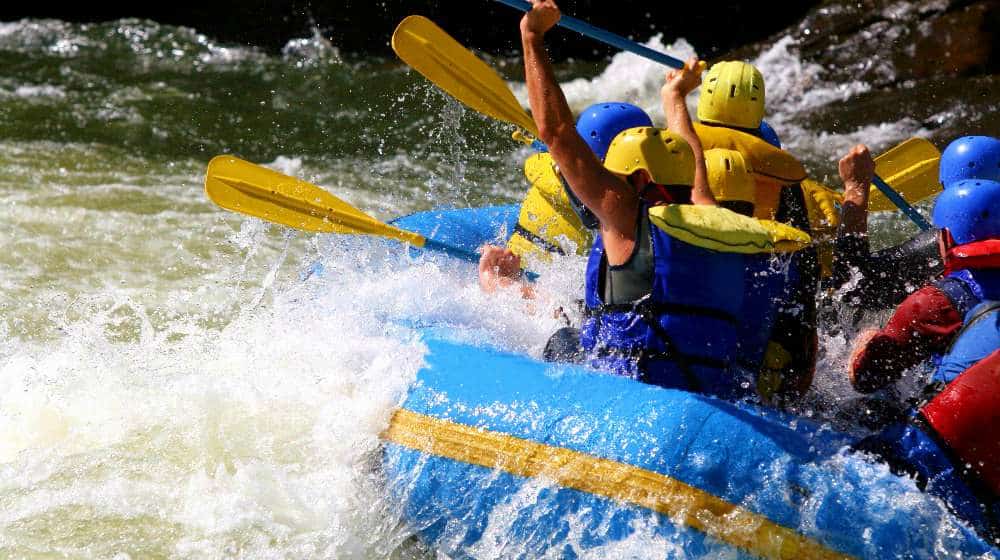Do It Yourself
12 Rainwater Collection Tips

Why is it important to learn rainwater collection methods?
Living in such a modern world nowadays, most people don’t worry about much at all. They can mostly get what they need at home with just a push of a button or a flip of a switch. Even going camping outdoors is more like “glamping” these days, with food, water and even internet easily accessible.
But what if you run out of water, either at home or while spending time outdoors? What if there’s no way to get water elsewhere? Even if you were able to collect water, how would you make it safe to drink?
The following rainwater collection tips are for those who may find themselves in dry spell conditions, or even those who might like to save some money on their water bill.
Rainwater Collection Tips for Preppers
1. Check State Laws Before Collecting Rainwater

Are rainwater collection systems legal in your area? A water permit is required for some states in the US, while others don’t allow you to collect any rainwater at all. Better safe than sorry.
2. Collecting Rainwater At Home Using Food Grade Rain Barrels

Place the barrels beneath your downspouts. You can use cheesecloth, a coffee filter or a screen trap will help filter the water from sediments.
3. Make Your Own Rain Barrel
This tip will help you go through the Do’s and Don’ts in making your own rain barrel.
3. DIY Rainwater Collection System

This tip will help you collect rainwater mostly using materials that can already be found lying around your house. It may take a few hours of your time every day but it will surely put your power tools to good use. Plus, you don’t spend much for by paying someone else to do it for you.
4. Make An Emergency Water Filter
Using an ordinary bucket, you can fill it with different layers of certain materials that probably won’t cost you a cent. Just don’t forget to place a hole at the bottom.
5. Build An UltraModern Rainwater Harvesting System
Collecting and transporting a rainwater barrel outside your home can be tiring and time-consuming. Installing a system with a more complex design may help. Some systems have an overflow pipe that releases excess rainwater to a designated location in your property.
6. Install A Greywater System
If rain is scarce in your area and you’re just trying to save on your water bill, you might want to consider installing this system. You can recycle water from dishwashers, sinks, showers, and washing machines for use other than drinking.
7. Make A Belowground Still
This would increase your chances of survival for outdoor enthusiasts. This is a very basic way of collecting water if there isn’t any fresh water source for miles.
8. Make A Solar Still
This is another ingenious way to collect drinking water in the wilderness. Just choose an inclined surface then dig a trench. With a stick, plastic bag and a few rocks you’ll quench your thirst in no time.
9. Plant Condensation

If there are a lot of plants nearby you can collect water through the process of condensation. You will need a plastic bag and a 550 cord or anything similar to that material. Wrap the plastic bag around the end of the plant or a branch of a small tree then wait for the water to condense at the bottom of the bag.
10. Use Rags To Collect Dew

Dew is most heavy right before sunrise or shortly after that. By tying rags on your ankles and walking through grass covered with dew you can wring the now wet rags into a container. It may not be enough but it will get you through a couple of more hours.
11. Purify Water Taken From Unreliable Water Sources

Purification tablets or 2% tincture iodine can come in handy when you need to purify water to make it safe for drinking. Make sure you purify water taken from swamps, lakes, streams, springs and ponds.
12. Use Tiny Zinc Oxide Wires Made In The Form Of Spiny Cactus

These cacti spike inspired design was able to collect water from the air five times more efficiently than its original counterpart. This will work wonders for those that run out of water in the desert. If caught unprepared, collecting water from miniature cactus spines can suffice.
Just surf the web and you can find a lot more tips in collecting water from a variety of sources. Regardless of your location or type of environment you are in, knowing how to collect water in different ways is crucial for everyday living and survival.

Want to learn more? Check out these 25 water conservation tips from our friends at Pioneer Settler.
-

 Do It Yourself7 months ago
Do It Yourself7 months agoParacord Projects | 36 Cool Paracord Ideas For Your Paracord Survival Projects
-

 Do It Yourself9 months ago
Do It Yourself9 months agoHow To Make Paracord Survival Bracelets | DIY Survival Prepping
-

 Do It Yourself9 months ago
Do It Yourself9 months ago21 Home Remedies For Toothache Pain Relief
-

 Do It Yourself10 months ago
Do It Yourself10 months agoSurvival DIY: How To Melt Aluminum Cans For Casting
-

 Exports8 months ago
Exports8 months agoAre Switchblades Legal? Knife Laws By State








Pingback: 12 Rainwater Collection Tips - Yes You Need Them!
Pingback: Drought Survival: How to Survive Natural Disasters
Pingback: How To Conserve Water | Conserve Water One Spray Bottle At A Time
Pingback: Rainwater Collection to Reduce Water Consumption – World of Phenomena – News
Pingback: Rain Barrel DIY | Do's and Don'ts of Building a Rain Barrel | Survival Life
Pingback: The Do’s And Don’ts Of Building Your First Rain Barrel – Ultimate Survival Alerts
Pingback: Drought Survival Tips: How to Survive Drought - WildSurvivalDigest.com